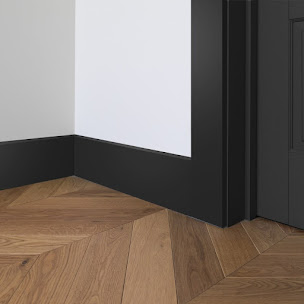The Different Types of Stair Nosing
The material strip placed at the front edge of each stair tread is referred to as Stair Nosing. It serves to shield the stair tread's leading edge from excessive wear and tear and can offer distinct stair limits that make each step easier to identify.
There are several materials that can be used to make stair nosing, such as rubber, metal, wood, or vinyl. It can be put as an extra part or incorporated into the stair material.
Square edge stair nosing has a very dramatic visual impact. The general design is square, and the edges have been artfully softened to minimize dents and scratches. It has gained popularity as a solution for both residential and commercial applications because of its easy installation and sleek, contemporary design.
One style of stair nosing design without projecting edges is called no overhang. It forms a ninety-degree angle between the tread and riser by removing the conventional overhang. With a continuous shape that lowers the chance of stumbling and has a sleek, contemporary appearance, this design gives the staircase the appearance of a single, seamless structure.
Another typical term for half round stair nosing is "bullnose." Its semi-circular form and softly rounded edges lessen damage in the event of a collision. It is usually applied to the part of steps that protrudes further than the rest.
A smooth, curved border that extends all the way to the staircase nosing characterizes the Full Round Stair Nosing, an exquisite staircase edging decoration. More often than not, this kind of edging is employed for staircase landings, mostly for aesthetic rather than functional reasons.
A popular residential staircase tread, pencil round stair nosing is identified by its rounded front edge that resembles a pencil cross-section. This anti-slip strip forms a softly rounded edge with a relatively small curve radius, usually between 1/4 and 1/2 inch.
By softening the corners of each step, this design lessens the chance of tripping or falling by making the stair edges less harsh.
Aluminum Stair Nosing is a corrosion-resistant, lightweight, and environmentally friendly solution that works well in most situations. The ease with which aluminum material can be shaped and processed to fit a variety of staircase designs is another benefit of this material.
Stainless steel stair nosing is incredibly durable and has a sleek, contemporary look. It can be used in demanding public spaces or outdoor settings and is resistant to wear and corrosion.
The staircase feels timeless and opulent thanks to the brass stair nosing. Hard and naturally antibacterial, brass is a material. Brass acquires a distinct, deep patina with age that gives it a feeling of history.
Rubber stair nosing are made especially to protect the edges of staircases from hazards. They have a textured non-slip surface that improves traction on step edges, hence reducing the risk of slipping incidents.
When it comes to emergency scenarios or nighttime evacuation, phot luminescent stair nosing may both emit light in the dark and absorb light energy under varying illumination conditions.




Comments
Post a Comment